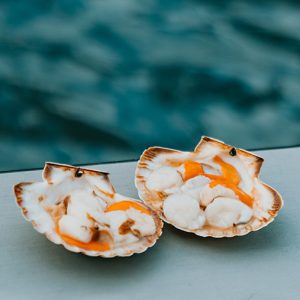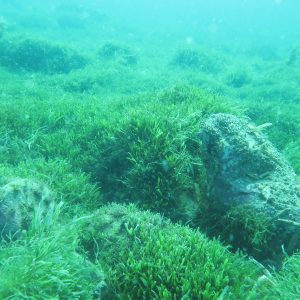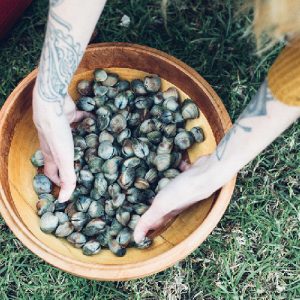Whether there is a seafloor hardened by rock structures, a seafloor soft and sandy, or a seafloor teeming with coral life, a single pass of a scallop dredge can reduce the total number of creatures on the seafloor by around 60 percent.
A countless number of sea creatures use the seafloor as their home or spawning ground. Fish species use the seafloor as nurseries for young fish. For shellfish, starfish, crabs and lots of other species, the seafloor is often their only home.
Around our coastline scallops use particular seafloor habitats for the settlement of spat so it’s important to protect those habitats. There is growing concern about the noticeable decline in scallop numbers, this is mainly being attributed to poor management of commercial scallop harvesting and the ongoing use of Victorian Box scallop dredges.
The combined weight of a scallop dredge, chain and the toothed bar means the dredge is able to scrape along and into some seafloor types to gather partially buried scallops. This occurs at the risk of destroying the majority of the dredged seafloor habitat.
Dredge lines running across the seafloor resemble ploughed crop fields for months afterwards.
The effects of scallop dredging on seafloor environments can be horrific.
It isn’t just scallops that suffer under the weight of a dredge, many marine species are affected by the ecological costs associated with dredging. Dredging has detrimental effects on ecosystems, including species removal and seafloor disturbance.
Seafloor disturbance, where sediments are resuspended due to heavy seafloor contact, has a choking effect on shellfish species, negatively affecting their growth and numbers. These effects disrupt ecosystem services, contributing to overall declines in productivity and fish populations.
Coastal communities have noticed the decline in shellfish species and have taken matters into their own hands.
Earlier this year the Waiheke community in the Hauraki Gulf supported Ngāti Pāoa in proposing a two year rāhui around the island. The rāhui applies to four depleted species because there has been noticeable declines of scallops, mussels, crayfish and pāua for many years and nothing has been done about it.
Eastern Coromandel communities and Ngāti Hei have recently placed a voluntary recreational and customary ban on scallop harvesting, and there is a growing desire to ban all commercial and recreational scallop dredging along the Coromandel coastline.
These community and iwi-based actions are only the beginning. The facts can no longer be denied or hidden – the size and number of shellfish beds is declining nationwide, and there are no moves by Fisheries New Zealand to combat the decline by banning dredging.
In the Coromandel fishery, commercial fishers cannot catch their scallop quota, recreational divers are struggling to find large scallops, and for a species that is able to spawn several times a year, spawning beds have noticeably and significantly decreased in numbers.
A ban on scallop dredging is something everyone can advocate for nationally.
We also need to be thinking about new management tools and controls once abundance is restored. Alternative harvest methods such as permitting commercial diving for scallops is a solution that allows for selective harvesting and effective stock monitoring.
The Rescue Fish policy reform package prioritises low impact recreational and commercial fishing methods and calls for a permanent ban on dredging and other destructive fishing methods nationwide.
Petition
More conservative management of our fisheries resources and more abundant fish stocks are all elements of our Rescue Fish policy. Successful implementation of the policy requires a strong show of public support for change. Please encourage your whanau, friends and colleagues to sign the petition at rescuefish/petition.





